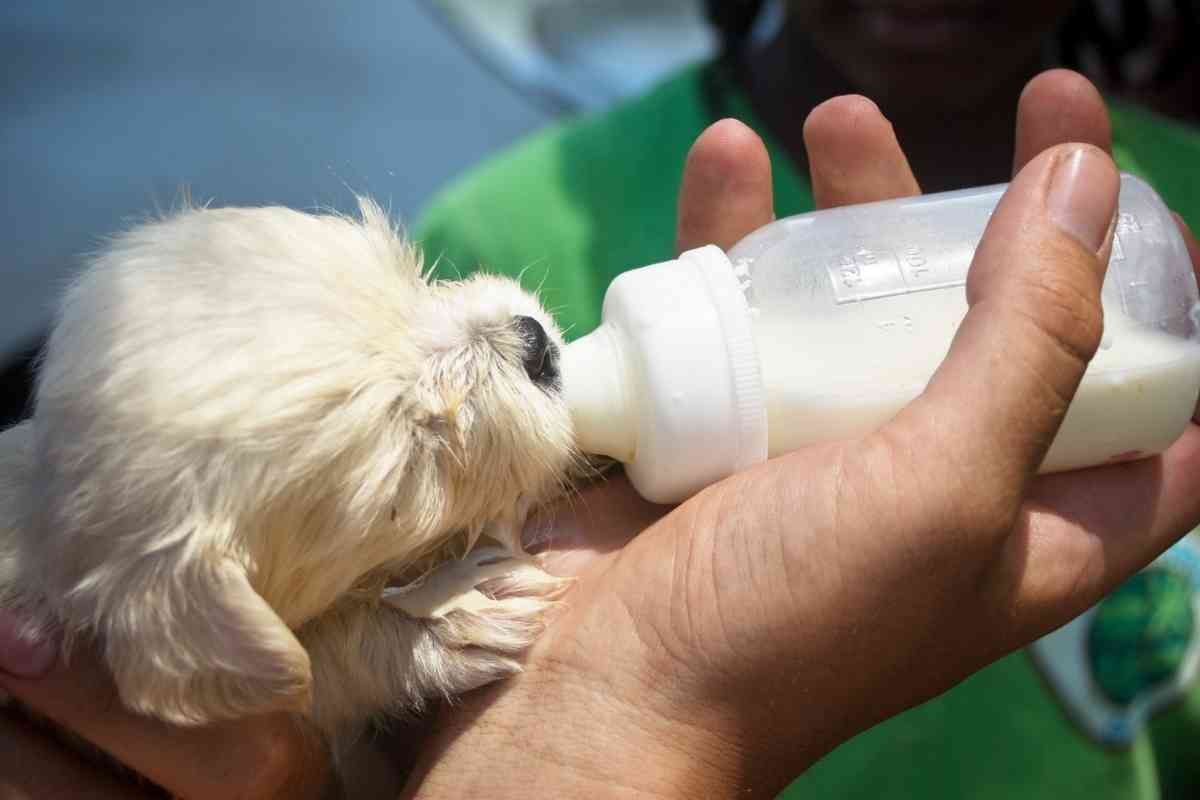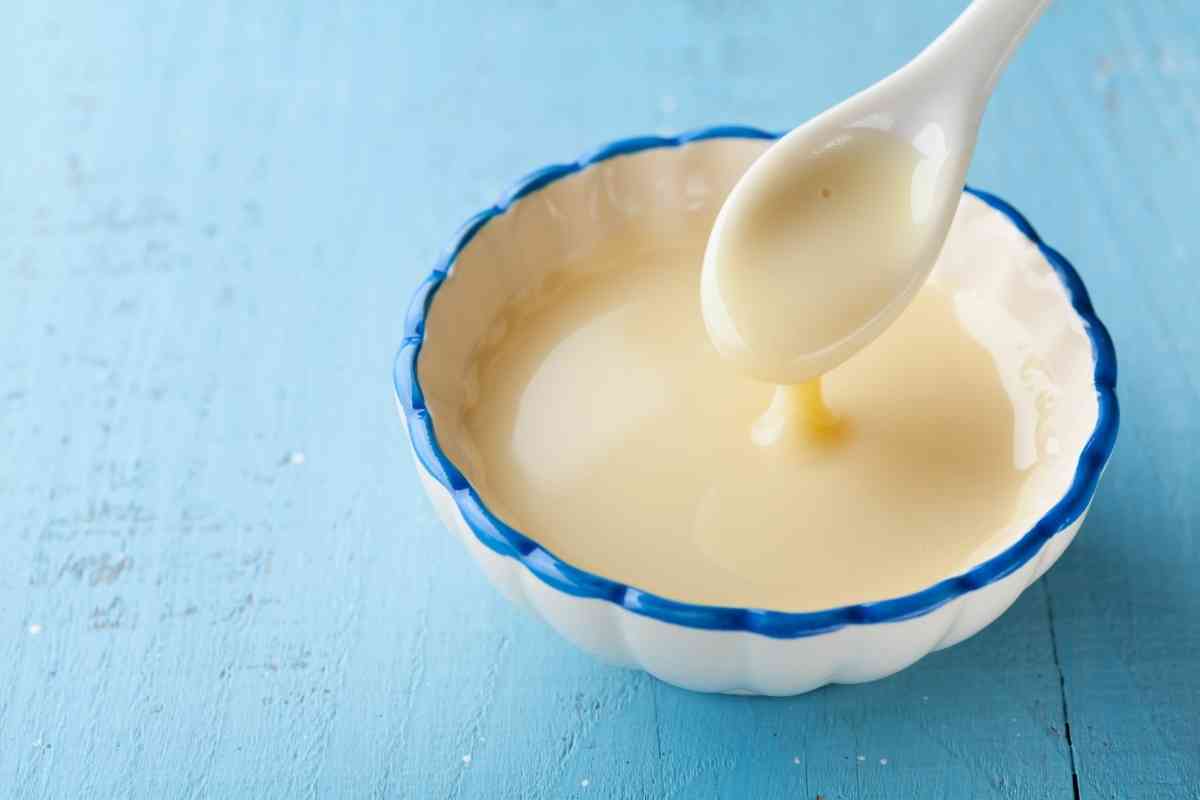Can Puppies Drink Evaporated Milk? Is It Safe?
What do you do if your puppy is left by their mother, or they refuse to take care of their young one? Do you know what you will feed the puppy? Most pet parents do not plan to raise a litter of pups by hand. However, it may be required if the dam becomes ill or leaves her young. Store-bought canine milk substitutes are okay to keep puppies alive; a homemade formula may also be effective. So, can puppies drink evaporated milk?

Can Puppies Drink Evaporated Milk?
Since dogs are predisposed to appreciate human foods, you can give your puppy evaporated milk in moderation. However, it would be best if you realized many dogs have lactose intolerance, and consuming evaporated milk or other concentrated forms of cow’s milk might cause stomach upsets.
Most female dogs nurse their pups without assistance; however, even seasoned mothers occasionally require a little help.
When first-time dams hear a few wailing puppies, they could feel uneasy and not lie down sufficiently for the babies to feed. It’s possible that older mothers or those that weren’t in good health before whelping will not produce sufficient milk to feed their puppies.
Unlucky or orphaned pups can be put with a female already caring for puppies. However, if this is not an option, then bottle feeding is the only option for the puppies to survive.
How to Mix Evaporated Milk
Evaporated milk would be a great base for your handmade pup milk substitute. The evaporated milk is just as thick, resembles the dam’s normal milk, and contains sufficient fat to nourish. Some pet parents prefer more unique bases, like goat’s milk, although evaporated milk is widely accessible and convenient to store.
Fill the empty plastic feeding bottle with three ounces of heated or distilled water and ten ounces of evaporated milk. Add a cup of plain yogurt, half a teaspoon of corn syrup, and a raw egg, and shake properly to have a uniform mixture.
When not in use, keep the milk substitute in the refrigerator, and dispose of it after any remaining replacer after seven days.
How to Feed the Puppy
Feed the puppy once each 2 to 3 hours till they reach five weeks old, at which point you may start giving them solid food.
The formula needed for each feeding varies depending on the age and size of the pup, but as a general guideline, one milliliter is needed for every ounce of the pup’s body weight.
To warm the milk to body temperature, pour the required amount into a nursing bottle and hold it over a pan of boiling water. Lay the dog on their tummy on a towel spread over your lap. Let them seek the bottle’s nipple while you hold it close to their nose.
Tip to Help You Bottle-Feed Your Puppy

Because young puppies need to be fed after 2 to 3 hours, bottle-feeding takes time and patience. The developing puppy will have a simpler time feeding if you incorporate some tips.
Selecting the Feeding Bottle and Nipple
Whenever bottle-feeding pups, it’s crucial to pick containers that are comfy for you to hold and nipples that effectively fulfill the puppy’s milk needs. The nipple and its hole size are crucial characteristics for the pups. Turn the puppy formula bottle so the nipple faces down once it is filled. Squeeze the bottle lightly.
Milk should ideally be released in little drops. Puppy nipple apertures that are too small make it difficult for the pup to receive the milk from the bottle, frequently preventing the puppy from getting adequate nutrition. The pup may also swallow too much air while trying to eat, which can result in bloating and gas.
If you find a puppy having trouble getting milk, disinfect a needle with heat and widen the opening. Remember that an excessively large nipple hole increases the chance of the puppy breathing milk into the lungs and can lead to excessive milk intake.
Cleaning and Sterilizing the Bottle and Nipple
Sanitation and sterilization are crucial for bottle-fed puppies, especially if their mother did not give them any colostrum. The antibodies needed to combat illness are missing in these pups. All bottle parts should be cleaned and sterilized before and after each feeding.
Bottles and their nipples should be boiled for at least ten minutes. Ensure that you remove the nipples and feeding bottle from boiling water and let it air-dry before using it to feed the puppy.
Label the Nipples and Feeding Bottles
This is a very important tip for any parent bottle-feeding more than one puppy. Each pup’s feeding bottle nipple hole will be unique. While a puppy with a powerful sucking reflex will perform well with smaller apertures, a weak puppy may require a bigger opening.
One tip for feeding a big litter of puppies is to identify each youngster by name and label the nipple rings. Separate each puppy’s bottle and nipple individually while cleaning the bottles.
How to Position and Feed Your Puppy
The ideal way to feed a pup is to place them precisely to how they suckle from a dam. For warmth, pups sleep on their stomachs and huddle up next to their mother. The same applies to bottle feeding.
Place the puppy on your lap after wrapping her in a little towel to keep her warm. Insert the bottle’s nipple into the puppy’s mouth, and lift the bottom just a bit. Press the bottle to release some milk into the puppy’s mouth, encouraging sucking. Rub the pup’s chin and neck gently if they do not start sucking.
How to Avoid Gas and Constipation
Bottle-fed puppies need to burp to release gas as human newborns do. As you place the puppy on your shoulder, rub and stroke her back gently till they burp. You must assist her potty after burping. New puppies can’t urinate or defecate on their own. Female dogs lick their pups to encourage discharge.
You have to assume this function with bottle-fed puppies. Gently massage the pup’s genitalia and anus with a damp cotton ball or towel.
Each feeding should result in the presence of pee and, after two to three feedings, a bowel movement. Your dog may become ill and develop constipation if they are not stimulated.
Is Regular Milk a Good Substitute for My Puppy?
Ideally, you shouldn’t ever give puppies ordinary cow’s milk. This is so that young, developing puppies may meet their nutritional demands, which are not met by pasteurized cow’s milk. Although goat’s milk is simpler to digest, dogs should not be given it regularly due to high lactose levels.
However, puppies can be given evaporated milk as early as three weeks old. Be sure to feed them plenty, then wean them when it’s time. Dams often begin weaning their offspring between 3 and 4 weeks of age. This process continues until a puppy is around 7 or 8 weeks old. You should adhere to a similar regimen for weaning puppies off evaporated milk.
Is There Any Danger If I Overfeed My Puppy?
Overeating in the first weeks results in a puppy’s body developing too quickly, resulting in health problems such as leg bowing. An overfed Pup is more likely to experience issues with its bones and digestion over time.